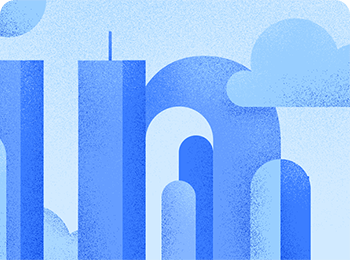Web design governs everything involved with the visual aesthetics and usability of a website—color scheme, layout, information flow, and everything else related to the visual aspects of the UI/UX (user interface and user experience). Some common skills and tools that distinguish the web designer from the web developer are:
- Adobe Creative Suite (Photoshop, Illustrator) or other design software
- Graphic design
- Logo design
- Layout/format
- Placing call-to-action buttons
- Branding
- Wireframes, mock-ups, and storyboards
- Color palettes
- Typography
Web design is concerned with what the user actually sees on their computer screen or mobile device, and less so about the mechanisms beneath the surface that make it all work. Through the use of color, images, typography and layout, they bring a digital experience to life.
That said, many web designers are also familiar with HTML, CSS, and JavaScript—it helps to be able to create living mock-ups of a web app when trying to pitch an idea to the team or fine-tune the UI/UX of an app. Web designers also often work with templating services like WordPress or Joomla!, which allow you to create websites using themes and widgets without writing a single line of code.
Did you ever wonder what is the meaning of web design and what are the techniques involved in this process?
We are used to looking at the internet as a visual medium. Websites, apps, services, games, and so on rely on interfaces to provide appropriate experience to their audiences. However, all that requires good web design to work.
Those who wish to strengthen their digital presence must be aware of the web design’s role in any venture. Such knowledge will help properly prioritize the right steps when creating any product or solution.
What is web design?
Web design is the field that involves digital interfaces such as websites, apps, and services.
By using HTML code to program websites and CSS to standardize its visual language, web design professionals are responsible for building digital experiences to be used by the public. The aim is to deliver a quality experience to the audience and help the business reach its goals.
As such, a web designer is a professional that acquires the necessary skills to perform this job. Those might be specialized in specific web design fields, ranging from website creation to mobile app development. In all cases, the goal is the same: to materialize the project’s vision.
Web design has a few subdivisions that are detailed below.
Web graphic design
This is web design applied to a website’s visuals. It involves everything from the colors and fonts to the general layout of its pages.
The most important task is to translate the brand’s identity to the website’s design. The visitor must be able to relate to that and properly see the page as part of that business’s presence.
Interface design
Web design work also refers to interface design. Not only does it apply to traditional websites but it involves mobile apps, games, computer software, and several other products too. After all, an interface is anything that serves as an intermediary between the user and the system.
The idea is to deliver an interface that is simple, intuitive, and adapted to the target audience’s particularities.
source: www.upwork.com/hiring/development/web-design-vs-web-development/

